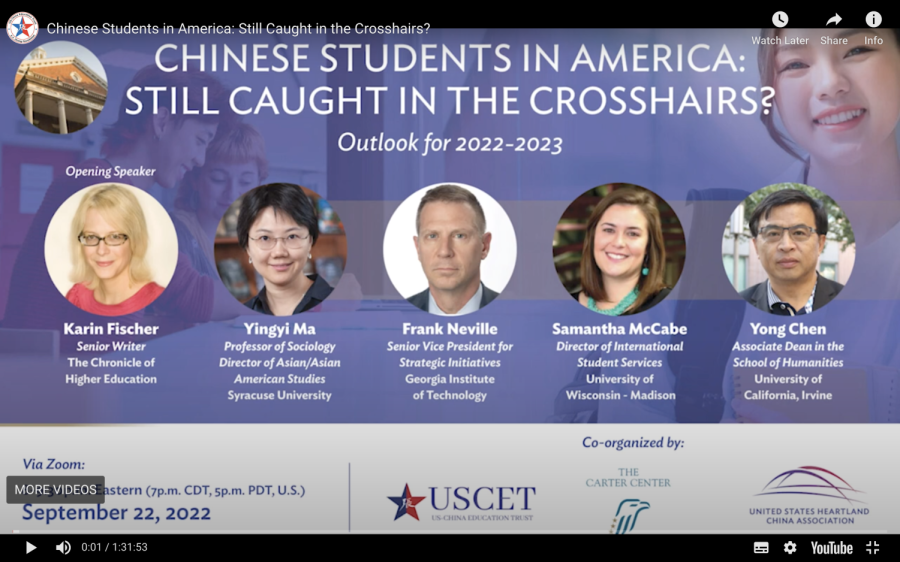Chinese Students In America: Still Caught In The Crosshairs?
September 27, 2022
With the last two years of pandemic and policy sanctions severely hampering the progress of Chinese internationals studying abroad, the latest US-China Education Trust (USCET) event was a timely look at what U.S. universities can do to support these students during a period of ongoing tension between the U.S. and China.
USCET convened a panel of professors and senior administrators from campuses around the US to share their insights into how American universities are ensuring that Chinese students feel welcome while navigating the politics of their campuses’ Chinese connections. The event took place online on Thursday 22 September, with more than 100 participating virtually.
The panel ruminated on the reasons for less Chinese students choosing the U.S. to study. Karin Fischer, a senior writer for the Chronicle of Higher Education, highlighted data from the U.S. Department of Homeland Security which revealed that in May, June and July 2022, there were 43,000 visas given to Chinese students – 45% fewer than in the same 3 months in 2019.
Numerous reasons for this decline were cited, for example the fact that many students were unable to come to the U.S. to study during the pandemic as they were unable to take the standard test required by U.S. universities.
To counter these falling numbers, some universities are looking for ways to expand the footprint of their study abroad programs. Among them is Georgia Tech, which now has a joint program with Tianjin University and a dedicated campus in Shenzhen which offers five master’s programs. Approximately 300 students are currently enrolled in these programs. Frank Neville, Chief of Staff and Senior Vice President of Strategic Initiatives at the Georgia Institute of Technology, said, “We have been blessed with an international footprint that has allowed us to improve our connectivity and improve our service for Chinese students and also to be a destination for a number of American students studying abroad there in Shenzhen.”
The pandemic certainly caused a large percentage of Chinese international students to decline opportunities to study abroad in the U.S. because of logistical difficulties and disruption.
However, this was not the whole story of the last couple of years, the panel discussed. Another dominant factor behind the decline was rising anti-Asian sentiment associated with rumor and disinformation about the pandemic and the associated vitriol and hatred directed at Chinese internationals across the country.
Samantha McCabe, director of international student services at the University of Wisconsin-Madison, said, “There is a lot of work that our campus can and should be doing in concert with our Asian Pacific Islander and Asian populations and organizations on campus to really take a stand against hatred and violence.” She suggested partnering with campus police departments and fostering community safety engagement with students, parents and families.
Regardless of the reason, the panel was in unison behind a call to arrest this decline and promote increased participation by Chinese students at U.S. universities. With tensions between the U.S. and China at a historic peak, keeping Chinese international students on campus would make the U.S. truly global and diverse. U.S. higher education institutions must do more to protect and encourage these students.
Min Fan, the Executive Director of US Heartland China Association, closed the event and said, “Keep the door open for young people and better understanding between the two countries can be accomplished.”
This webinar is available to watch in full on the USCET’s website here, alongside a full biography for all of the speakers.
